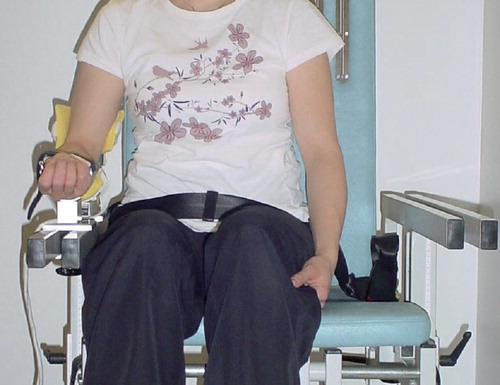Figures & data
Table 1. Types of secondary procedures performed during the follow-up period
Table 2. Median active range of motion (ROM) of the affected upper limb and the ratio (%) between affected and unaffected limb according to the extent of injury
Table 3. Isometric strength (N) measurements using the Metitur Good Strength device. Grip strength was also measured by the Jamar dynamometer (kg). Max. value of 3 attempts
Table 4. Odds ratios (ORs) and their 95% confidence intervals (CIs) for shoulder rotation strength (Good Strength; Metitur). Age at plexus surgery, sex, type of injury, and congruency of glenohumeral joint were considered as independent covariates in logistic regression models. A strength ratio of > 0.89 between the affected and the unaffected side was considered normal
Table 5. Odds ratios (ORs) and their 95% confidence intervals (CIs) for isometric elbow and hand strength measured by the Good Strength and Jamar dynamometers. Age at plexus surgery, sex, type of injury, and congruency of radiohumeral joint were considered as independent covariates in the logistic regression models. A strength ratio of > 0.89 between the affected and the unaffected side was considered normal
